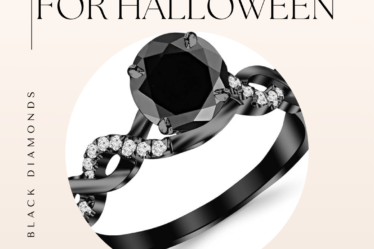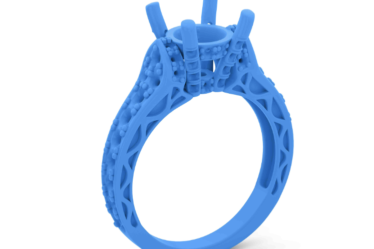
If you’re deciding between white gold and platinum for your engagement ring this article discussing the difference between both metals is for you.
When it comes to choosing an engagement ring, there are many factors to consider, including the type of metal used for the ring’s band. Two popular options for engagement rings are platinum and white gold. Both metals have their advantages and disadvantages, and it’s important to understand the differences between them to make an informed decision. In this article, we’ll discuss the difference between using platinum in an engagement ring versus white gold and how people should care for each metal to ensure long-term durability.
Platinum and white gold are two very different metals, and the choice between them largely depends on personal preference and budget. Platinum is a naturally occurring white metal that is rare and very durable, while white gold is a mixture of yellow gold and other metals such as nickel, palladium, and silver, which gives it a white color. The purity of white gold is measured in karats, with 24-karat gold being the purest form, but it’s not used for jewelry as it is too soft. Typically, 14-karat or 18-karat white gold is used for engagement rings.
Platinum vs. White Gold
Durability
One of the key differences between platinum and white gold is their durability. Platinum is one of the most durable metals used in jewelry and is known for its strength and resistance to wear and tear. It’s also hypoallergenic, which makes it an excellent choice for people with sensitive skin. On the other hand, white gold is less durable than platinum and requires more maintenance. It’s prone to scratching and may require frequent polishing to maintain its shine.
Color
Another important factor to consider when choosing between platinum and white gold is the color. Platinum is a naturally white metal and will maintain its white color over time. White gold, however, is not naturally white and is created by adding other metals to yellow gold to give it a white color. The white gold used in jewelry is usually coated with rhodium, a white metal that gives it a bright, shiny finish. Over time, the rhodium plating may wear off, and the yellow gold underneath may start to show through, giving the ring a yellowish tint. To maintain the white color of a white gold engagement ring, it may need to be re-plated with rhodium every few years.
Cost
The cost is also a factor to consider when choosing between platinum and white gold. Platinum is one of the rarest and most expensive metals used in jewelry, and engagement rings made of platinum can be significantly more expensive than those made of white gold. White gold, on the other hand, is more affordable than platinum and is often used as a cost-effective alternative to platinum.
Caring for Platinum Engagement Rings
Caring for Platinum and White Gold Engagement Rings
To ensure the long-term durability of an engagement ring, it’s essential to care for it properly. Both platinum and white gold require different care to maintain their appearance and durability.
Platinum is a low-maintenance metal and requires minimal care to maintain its appearance. However, over time, platinum can develop a patina, which is a dull sheen that forms on the surface of the metal. This is a natural occurrence and can be easily removed by a jeweler who specializes in working with platinum. To keep a platinum engagement ring looking its best, it’s recommended to clean it regularly with a mild soap and warm water solution. A soft-bristled brush can be used to remove dirt and debris from the ring’s crevices. Platinum is also resistant to tarnish, which makes it an ideal choice for people who want a low-maintenance engagement ring.
Caring for White Gold Engagement Rings
White gold requires a bit more care than platinum to maintain its appearance. The rhodium plating used to give white gold its white color can wear off over time so you will have to replate the ring in rhodium to make it appear white.
Both options are lovely choices for engagement rings but the maintenance will be the deciding factor for many people.



